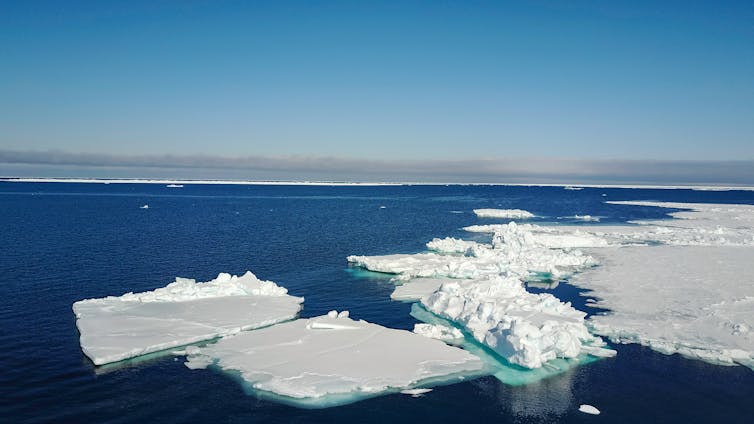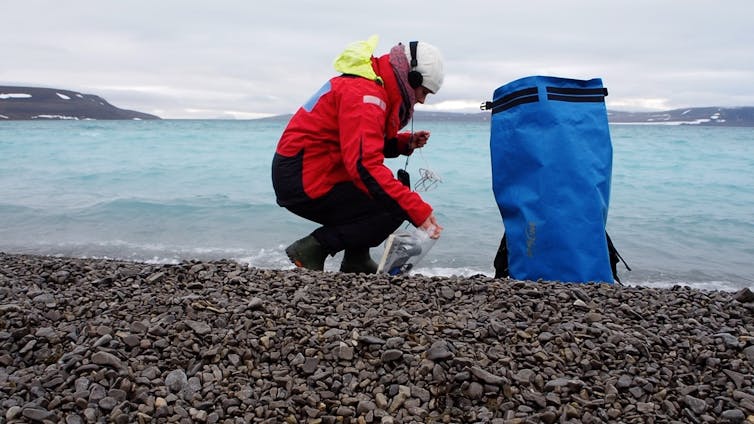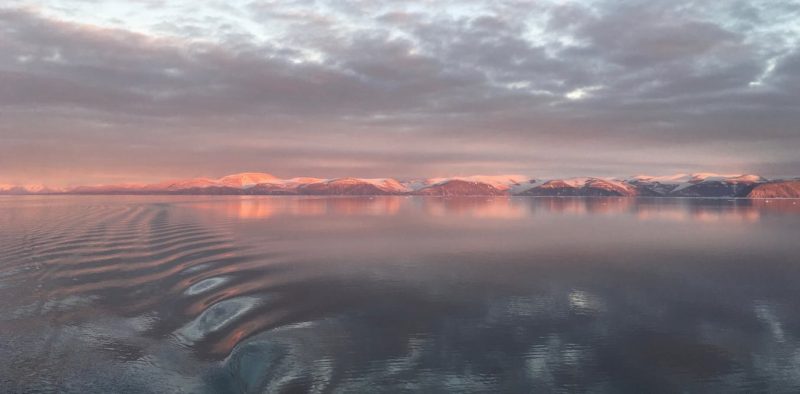How I made musical instruments from lab equipment to create empathy with the Arctic
The global crisis of climate change is one of the most complex and wicked of problems we currently face. It is a physical, technological and economic challenge, and one that raises questions right at the heart of our relationship with the environment in which we live. In the light of the IPCC’s most recent report, we face difficult decisions that will change every aspect of how we live.
Yet providing people with more scientific information has been shown to have little effect on the degree to which people care about the climate or understand the impact of human activity. Something else is needed to jolt us out of our current trajectory.
I am exploring the role of art as a route to knowing the environment in an alternative way. For my latest work, The Matter of the Soul, I hacked the electronics of lab equipment to transform them into musical instruments that play the sounds of melting ice. In the musical compositions and sculptural installations for this work, I explore the possibility of art to engender empathy with the Arctic ecosystem, and how dispersal of water, human movement and digital identity are three intrinsically interlinked processes of transformation relevant to climate change.
Immersed in the Arctic
I began the research for The Matter of the Soul sailing around Baffin Island in the Canadian High Arctic. I set up a temporary studio on the top deck of the ship Akademik Sergei Vavilov, where I could tinker with all of my equipment and explore the aesthetic of this fascinating place, so different from my European home.
The light in the Arctic was incredible. It felt like the sun touched me differently. But what struck me most was how much personality the water there had. Lumps of ice and mini-icebergs are strewn across the barren landscape, perching on top of rocks like seagulls or floating next to tiny islands as if they’re biding their time, waiting for their chance. The meltwater from glaciers crashed joyously down rock faces, surging into the ocean. Icebergs created a time all for themselves, distorting our reality when we intersected them. Ice water. Wildestanimal/Shutterstock
Ice water. Wildestanimal/Shutterstock
Around the ship, and on land in the open, rocky landscapes, I interviewed visitors to and residents based around Baffin Island. But I also captured the voice of the ocean and ice. I wanted to draw an analogy between bodies of water and human culture. To capture the voice of the water, I decided to explore the chemical consequences of ice melting.
Ice and seawater are the coming together of individual water molecules, just as culture emerges from the coming together of individual human beings. Water in ice both has its behaviour shaped by its environment and constructs this environment, just as we human beings are shaped by and construct our culture. When glaciers and icebergs melt, individual water molecules begin an adventure of dispersal that could take them as far as Mexico. The behaviour and trajectories of molecules are changed by the ocean that they have joined and become part of, just as when we travel – either for tourism or migration – we change and exchange with the cultures we encounter, and within ourselves.
There are plenty of scientific instruments for gathering data on how water changes due to climate change, but not many pianos that do it. I decided to merge artistic and scientific methods of encountering the world, by hacking the scientific instruments to make sounds that I could use in my musical compositions. On Beechy Island with a pH meter.Kat Austen, CC BY-SA
On Beechy Island with a pH meter.Kat Austen, CC BY-SA
Listening to dying ice
I took a pH meter and conductivity meter, which measures the water’s saltiness, with me to the Arctic. To get sound out of these scientific instruments I used a process called circuit bending. This process allows me to make audible the changes in voltage in the equipment when they measure the physical properties of the water. I can then record them.
It took a while for me to succeed in this. Immersed in the Arctic, having spent days in open water due to fog and ice, I had been struggling to find the sound in the circuit of the conductivity meter. Hunched in my little studio, dipping the probe in and out of my sample of “Open Seawater 2”, I suddenly heard it. A faint hum, followed by a diminishing click, with periodic surges in the sound. I had found a temporal representation of the salinity – the sound of the the dying off of the saltiness of the sea as icebergs melt. The sound of the dying of the ice.
Importantly, these recordings are not directly representative of the value of the measurements. They are rather derived from what happens inside the machines during the process of measurement. As such, the recordings are not a sonification of data, but rather a reflection on the process of measurement as a passive way of knowing, which can evoke the same sense of achievement as acting (and therefore can act as a placeholder for real action).
On October 23, I played my hacked instruments at Howard Assembly Rooms at Opera North in Leeds, accompanied by pianist Matthew Bourne and cornet player Alex Bonney. The hour-long symphony tells the narrative of transformation and dispersal in the Arctic: of ice and seawater, of changing culture and climate change. The raw material and compositions from the project will also be released online under Creative Commons, with a call for others to remix the work’s identity as it disperses through the internet. I am also releasing all compositions of The Matter of the Soul on audio cassette, with the full symphony coming out on cassette in November. I chose this physical format because it’s easy to remix it while preserving the audio quality.
We are at a tipping point, a moment where the decisions we make will drastically affect the future well-being of humanity. A wicked problem like climate change can’t be fixed by one action alone. It takes a collection of actions to tip the system. I hope that by connecting in an embodied way with the processes of transformation in the Arctic, it might be possible for a few of us to connect with transformations within ourselves, enabling us to take action without.
Central photo: Kat Austen, CC BY-SA
